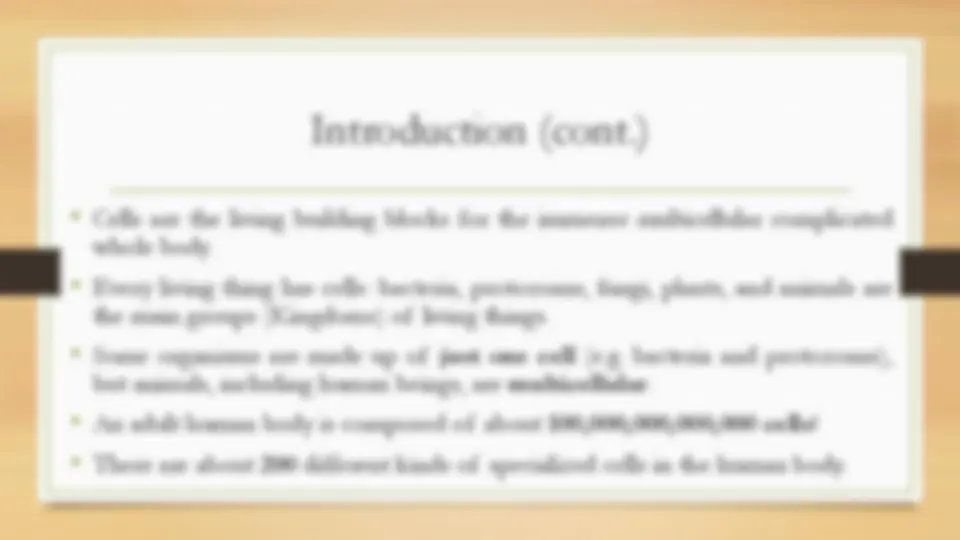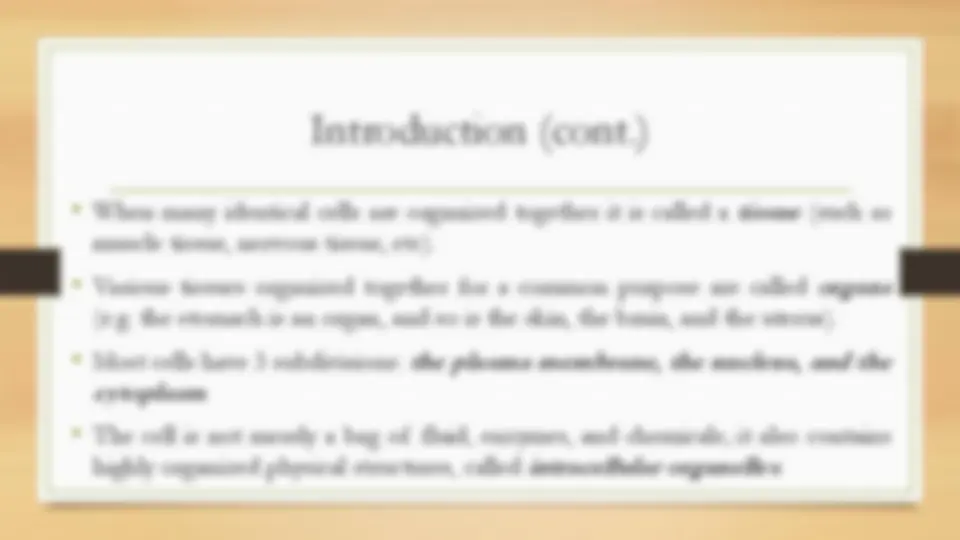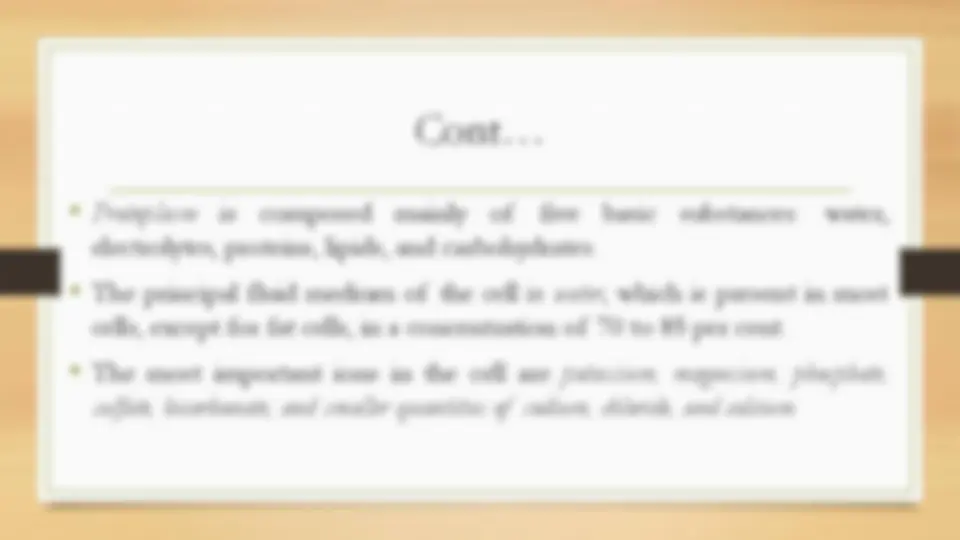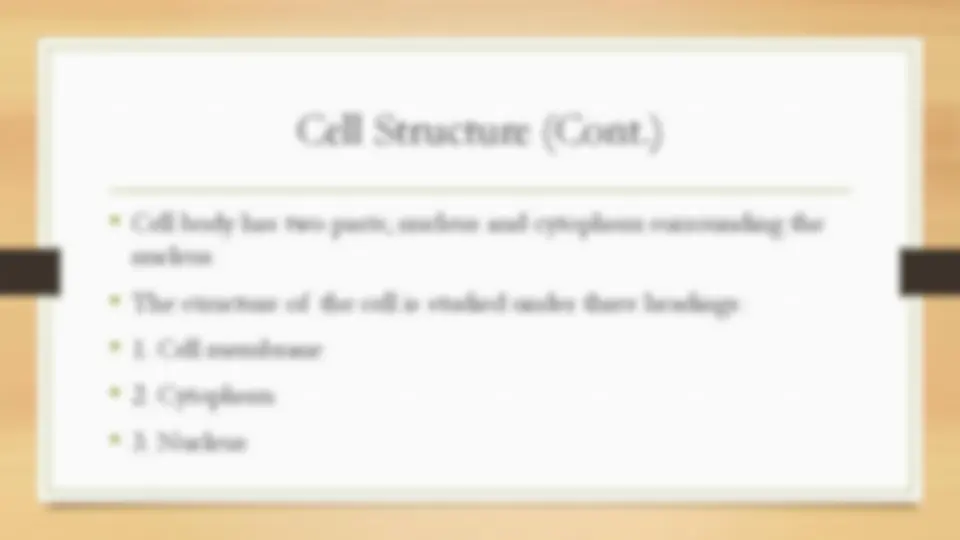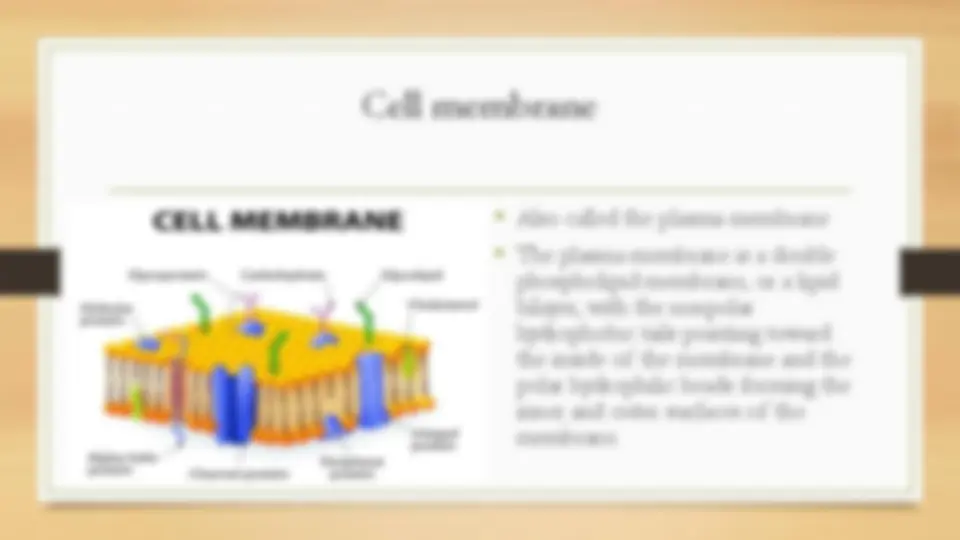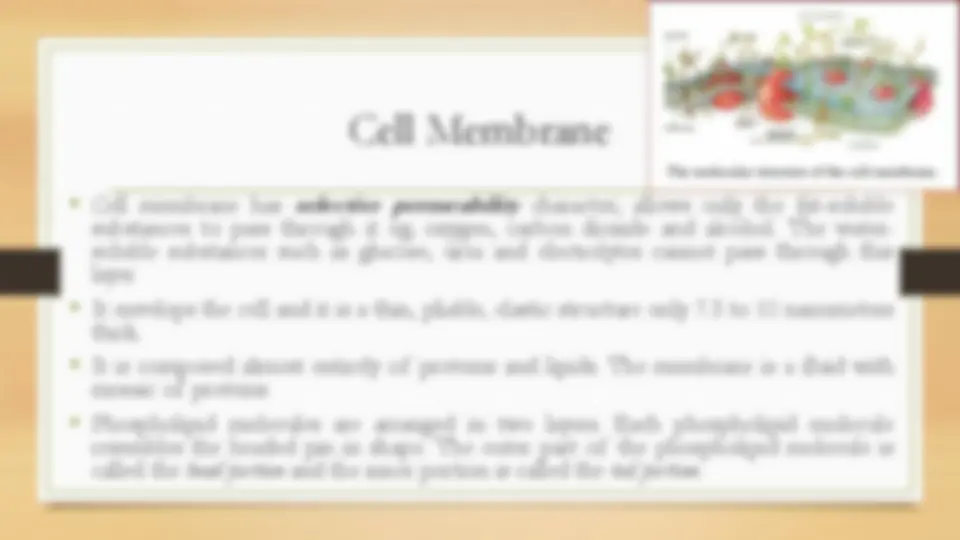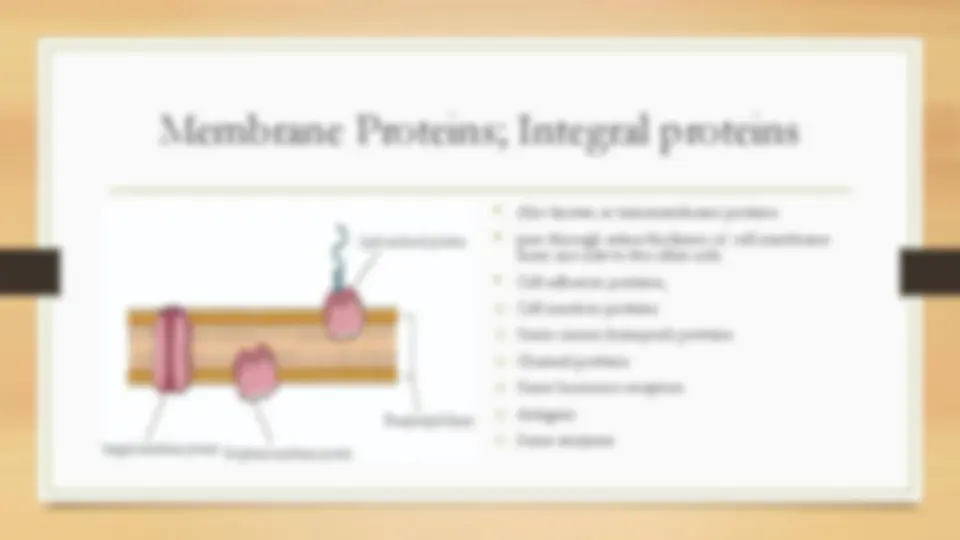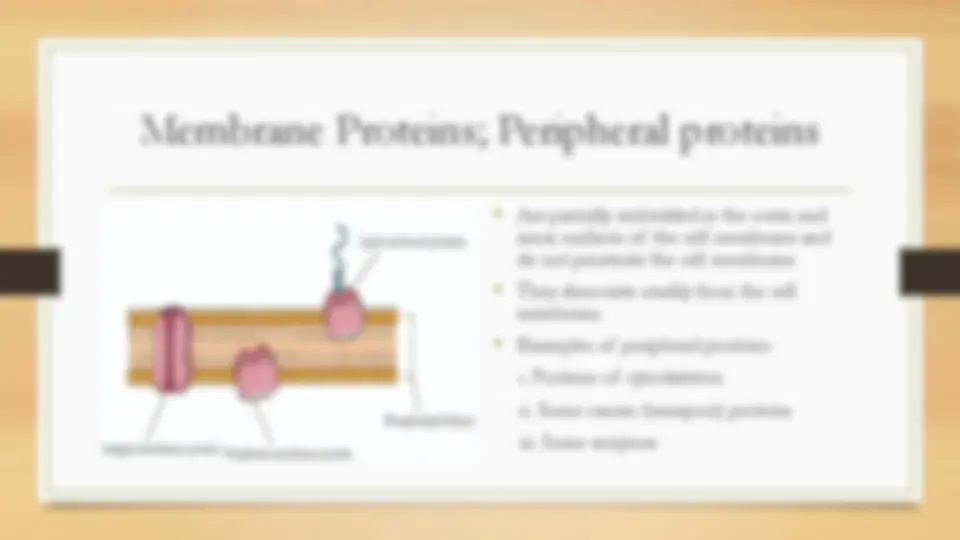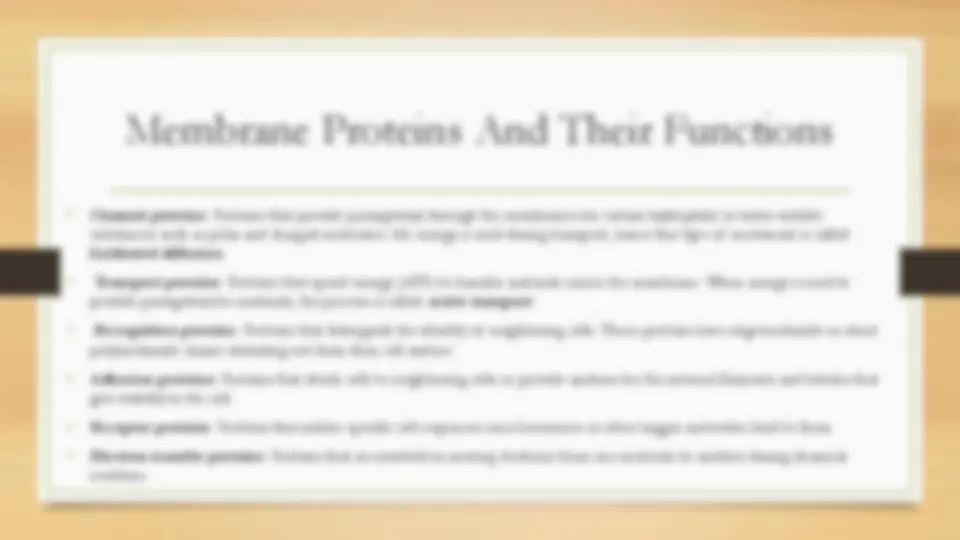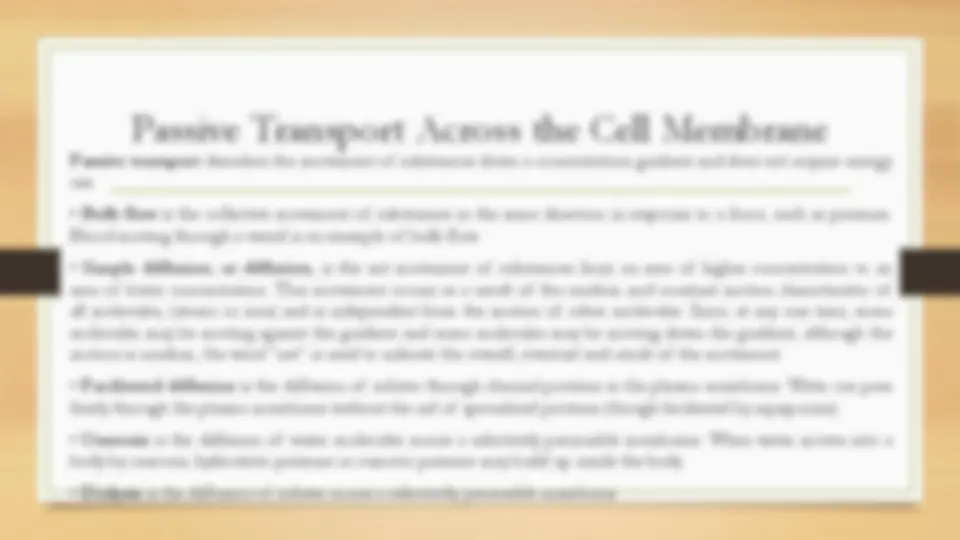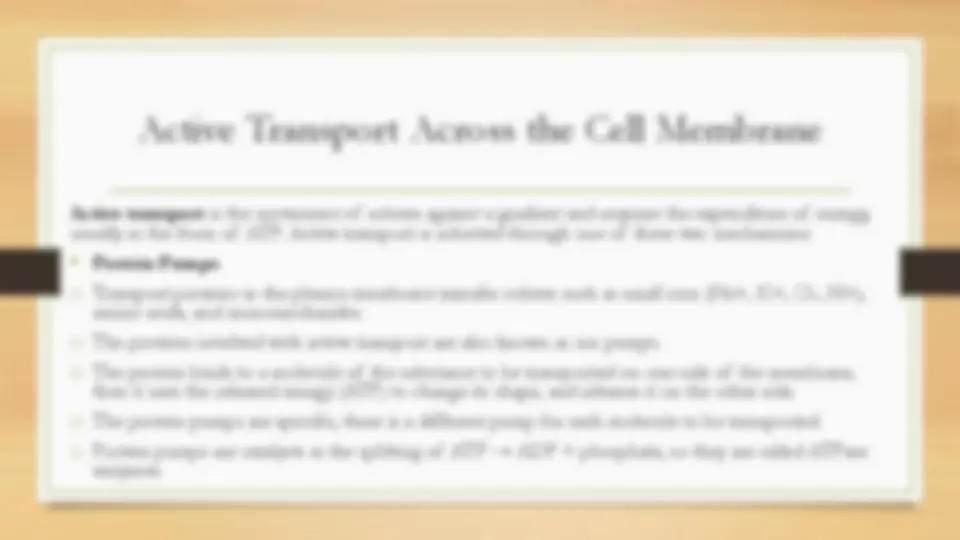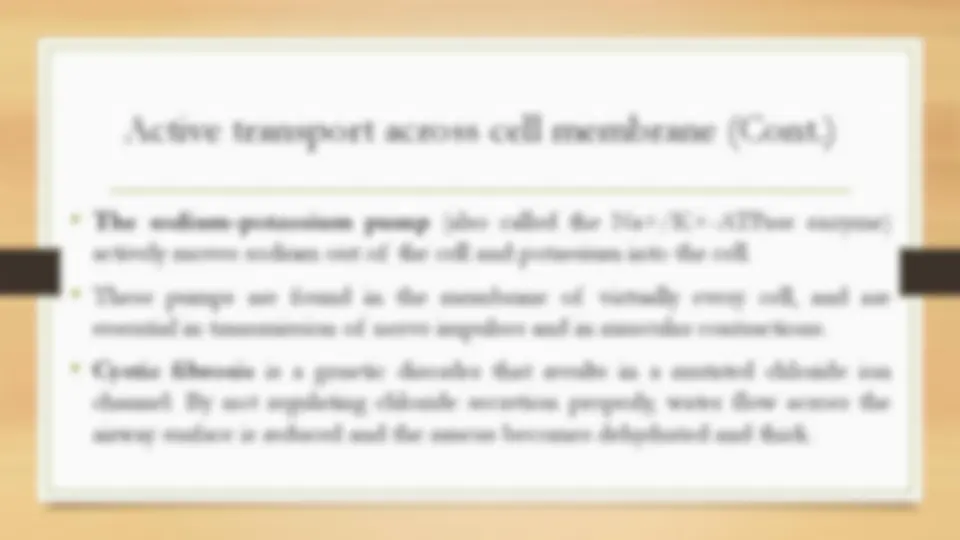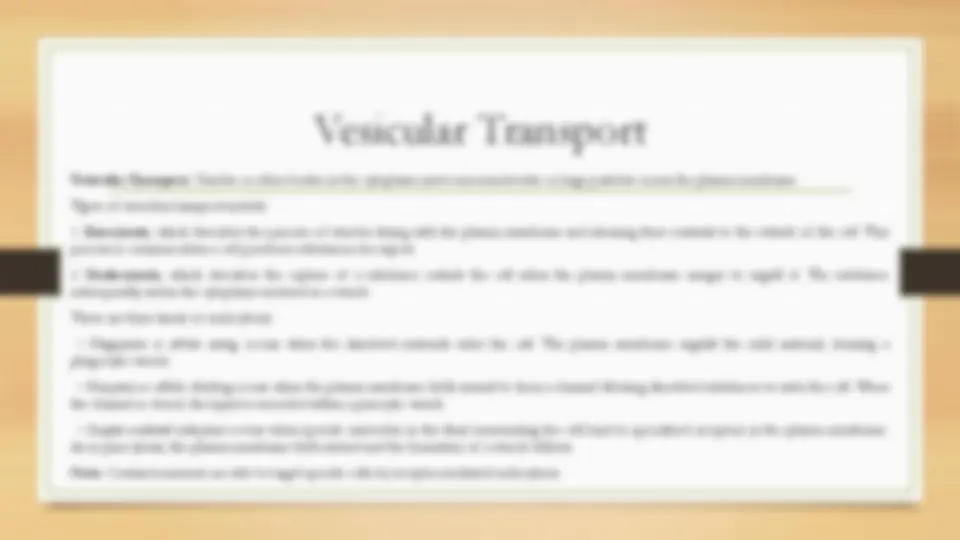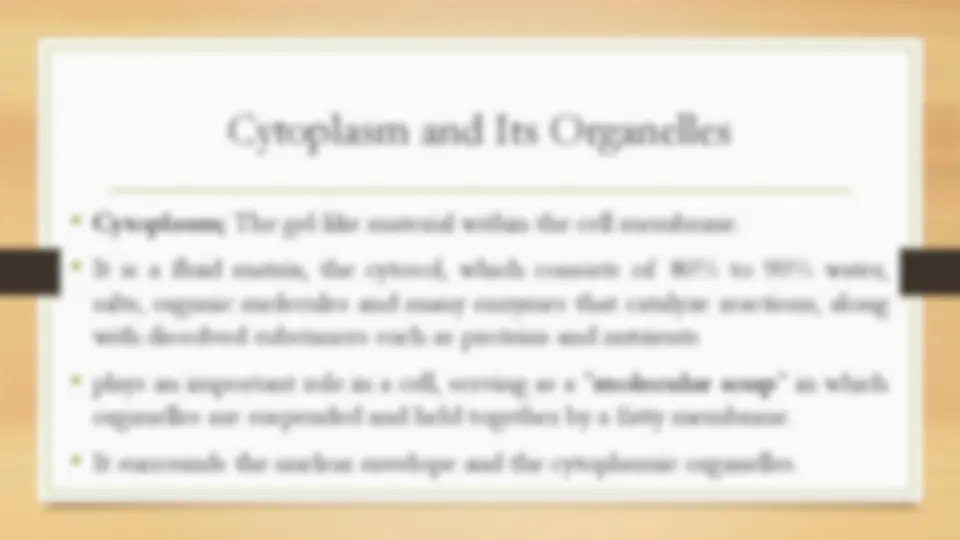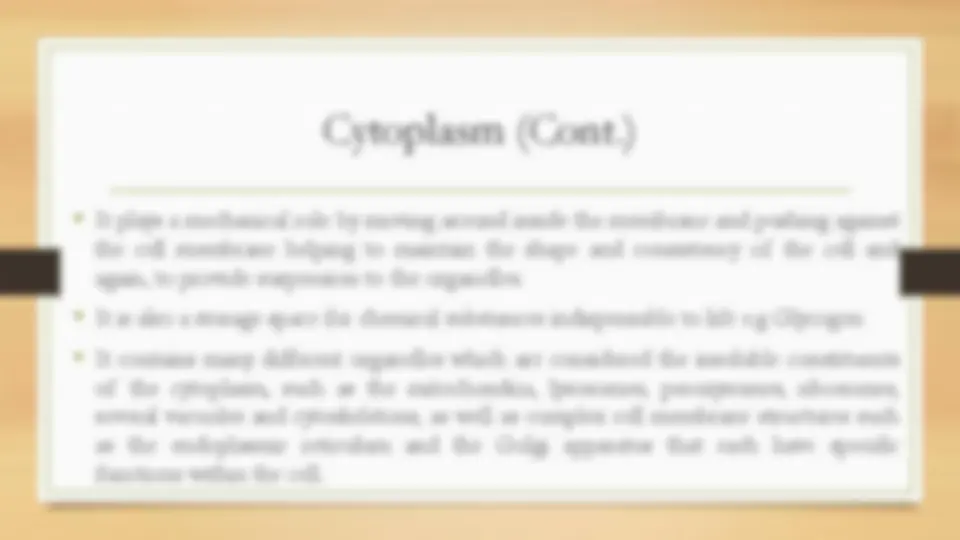Download Cell Biology: Structure, Function, and Transport and more Lecture notes Medicine in PDF only on Docsity!
CELL BIOLOGY
By Patrick Gachuki Maina
Introduction Definition of Cell; Cell is a microscopic fundamental unit of all living things. Also; The cell is the basic unit of structure and function in the body.
Introduction (cont.)
- When many identical cells are organized together it is called a tissue (such as muscle tissue, nervous tissue, etc).
- Various tissues organized together for a common purpose are called organs (e.g. the stomach is an organ, and so is the skin, the brain, and the uterus).
- Most cells have 3 subdivisions: the plasma membrane, the nucleus, and the cytoplasm.
- The cell is not merely a bag of fluid, enzymes, and chemicals; it also contains highly organized physical structures, called intracellular organelles.
Cont…
- Protoplasm is composed mainly of five basic substances: water, electrolytes, proteins, lipids, and carbohydrates.
- The principal fluid medium of the cell is water , which is present in most cells, except for fat cells, in a concentration of 70 to 85 per cent.
- The most important ions in the cell are potassium, magnesium, phosphate, sulfate, bicarbonate, and smaller quantities of sodium, chloride, and calcium.
Cell Structure
Cell Structure (Cont.)
- Cell body has two parts; nucleus and cytoplasm surrounding the nucleus
- The structure of the cell is studied under three headings:
- Cell membrane
- Cytoplasm
- Nucleus
Cell Membrane
- Cell membrane has selective permeability character; allows only the fat-soluble substances to pass through it eg; oxygen, carbon dioxide and alcohol. The water- soluble substances such as glucose, urea and electrolytes cannot pass through this layer
- It envelops the cell and it is a thin, pliable, elastic structure only 7. 5 to 10 nanometers thick.
- It is composed almost entirely of proteins and lipids. The membrane is a fluid with mosaic of proteins
- Phospholipid molecules are arranged in two layers. Each phospholipid molecule resembles the headed pin in shape. The outer part of the phospholipid molecule is called the head portion and the inner portion is called the tail portion.
Cell membrane (cont.)
- Head portion is the polar end and it is soluble in water and has strong affinity for water (hydrophilic).
- Tail portion is the non-polar end, insoluble in water and repelled by water (hydrophobic).
- Two layers of phospholipids are arranged in such a way that the hydrophobic tail portions meet in the center of the membrane.
- Hydrophilic head portions of outer layer face the ECF and those of the inner layer face ICF
Membrane Proteins; Integral proteins
- Also known as transmembrane proteins.
- pass through entire thickness of cell membrane from one side to the other side.
- Cell adhesion proteins;
o Cell junction proteins
o Some carrier (transport) proteins
o Channel proteins
o Some hormone receptors
o Antigens
o Some enzymes.
Membrane Proteins; Peripheral proteins
- Are partially embedded in the outer and
inner surfaces of the cell membrane and
do not penetrate the cell membrane.
- They dissociate readily from the cell
membrane.
- Examples of peripheral proteins:
i. Proteins of cytoskeleton
ii. Some carrier (transport) proteins
iii. Some enzymes
Functions of Proteins ( Repeat )
- Integral proteins provide the structural integrity of the cell membrane
- Channel proteins help in the diffusion of water soluble substances like glucose and electrolytes
- Carrier or transport proteins help in the transport of substances across the cell membrane by means of active or passive transport
- Pump: Some carrier proteins act as pumps, by which ions are transported actively across the cell membrane
- Receptor proteins serve as the receptor sites for hormones and neurotransmitters
- Enzymes: Some of the protein molecules form the enzymes and control chemical (metabolic) reactions within the cell membrane
- Antigens : Some proteins act as antigens and induce the process of antibody formation
- Cell adhesion molecules or the integral proteins are responsible for attachment of cells to their neighbors or to basal lamina
Functions Of Cell Membrane
1. Protective function: Cell membrane protects the cytoplasm and the organelles present in the
cytoplasm
2. Selective permeability: Cell membrane acts as a semipermeable membrane, which allows only
some substances to pass through it and acts as a barrier for other substances
3. Absorptive function: Nutrients are absorbed into the cell through the cell membrane
4. Excretory function: Metabolites and other waste products from the cell are excreted out
through the cell membrane
5. Exchange of gases: Oxygen enters the cell from the blood and carbon dioxide leaves the cell
and enters the blood through the cell membrane
6. Maintenance of shape and size of the cell: Cell membrane is responsible for the
maintenance of shape and size of the cell
Active Transport Across the Cell Membrane
Active transport is the movement of solutes against a gradient and requires the expenditure of energy,
usually in the form of ATP. Active transport is achieved through one of these two mechanisms:
- Protein Pumps o Transport proteins in the plasma membrane transfer solutes such as small ions (Na+, K+, Cl-, H+),
amino acids, and monosaccharides.
o The proteins involved with active transport are also known as ion pumps. o The protein binds to a molecule of the substance to be transported on one side of the membrane,
then it uses the released energy (ATP) to change its shape, and releases it on the other side.
o The protein pumps are specific, there is a different pump for each molecule to be transported. o Protein pumps are catalysts in the splitting of ATP → ADP + phosphate, so they are called ATPase
enzymes.
Active transport across cell membrane (Cont.)
- The sodium-potassium pump (also called the Na+/K+-ATPase enzyme) actively moves sodium out of the cell and potassium into the cell.
- These pumps are found in the membrane of virtually every cell, and are essential in transmission of nerve impulses and in muscular contractions.
- Cystic fibrosis is a genetic disorder that results in a mutated chloride ion channel. By not regulating chloride secretion properly, water flow across the airway surface is reduced and the mucus becomes dehydrated and thick.

